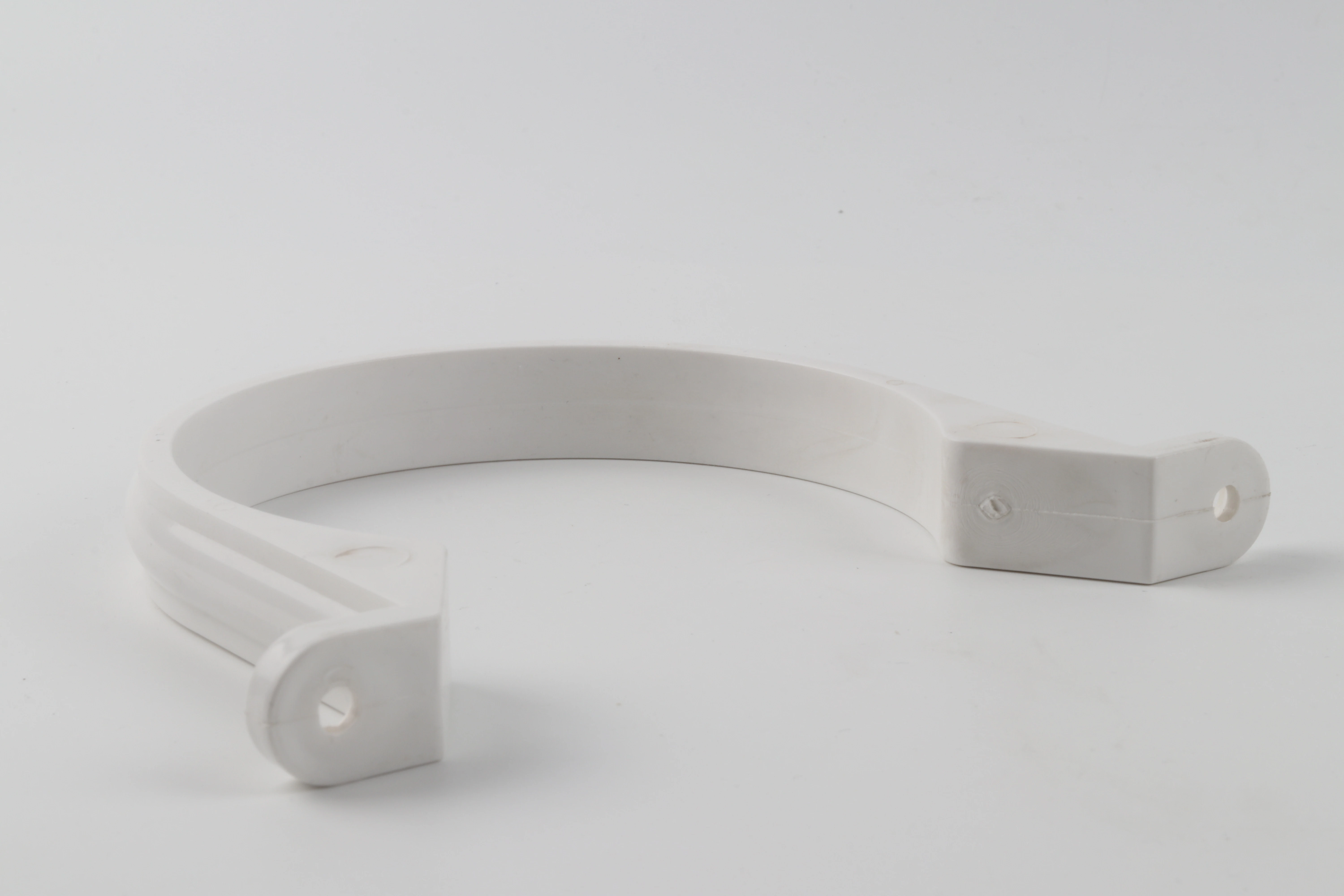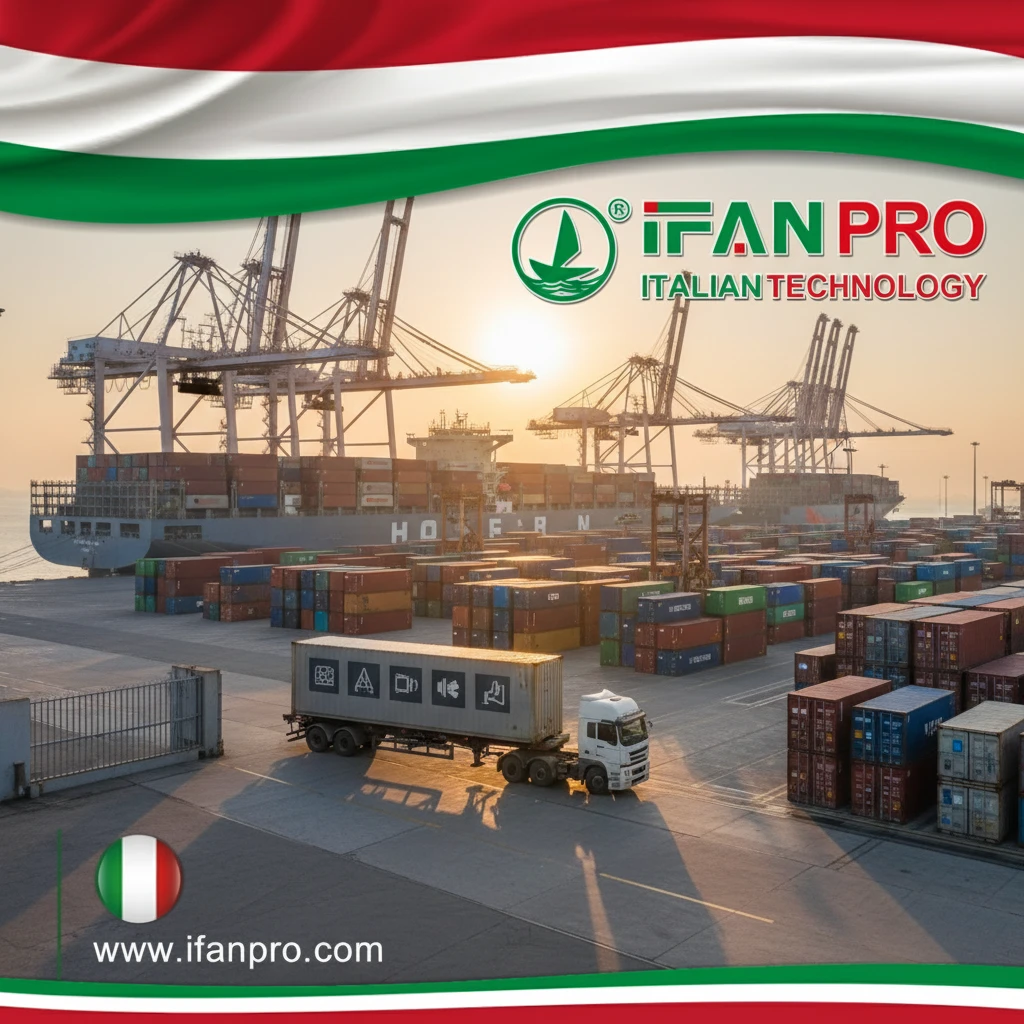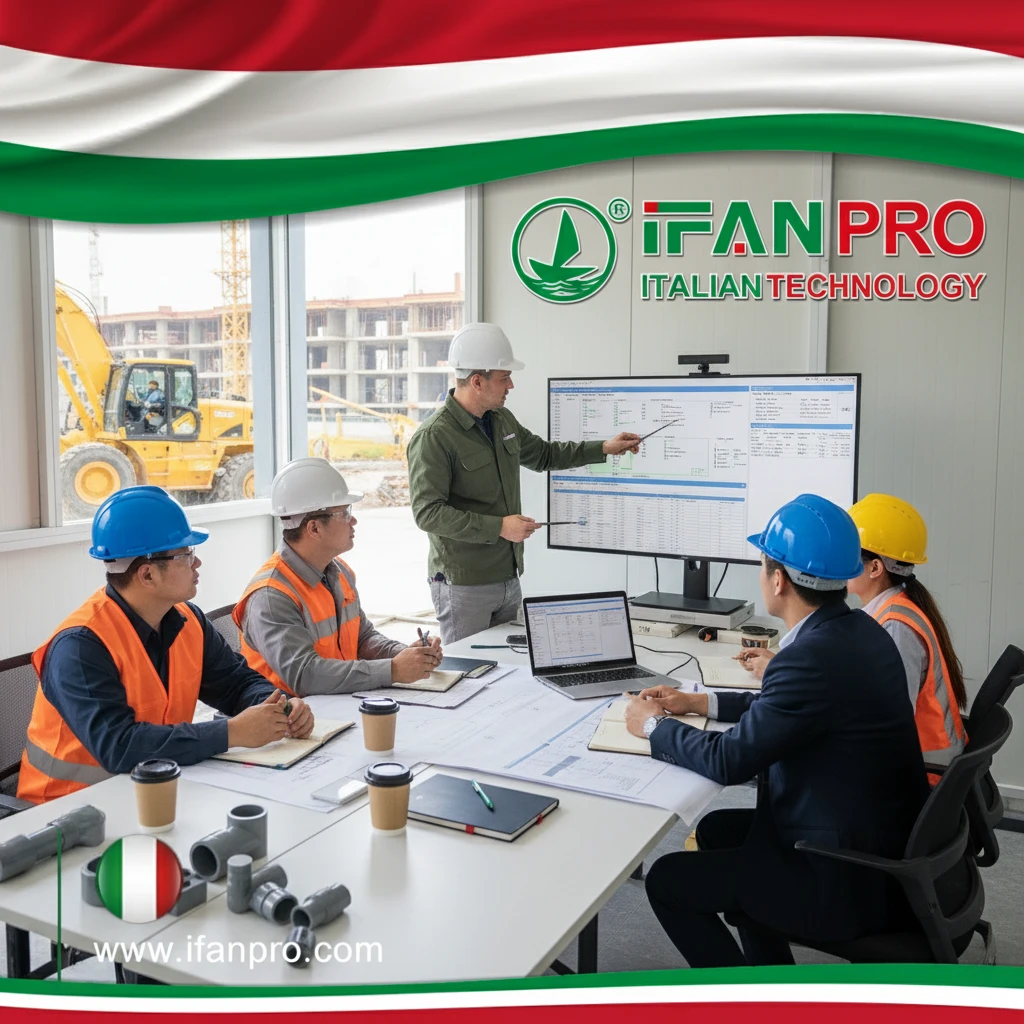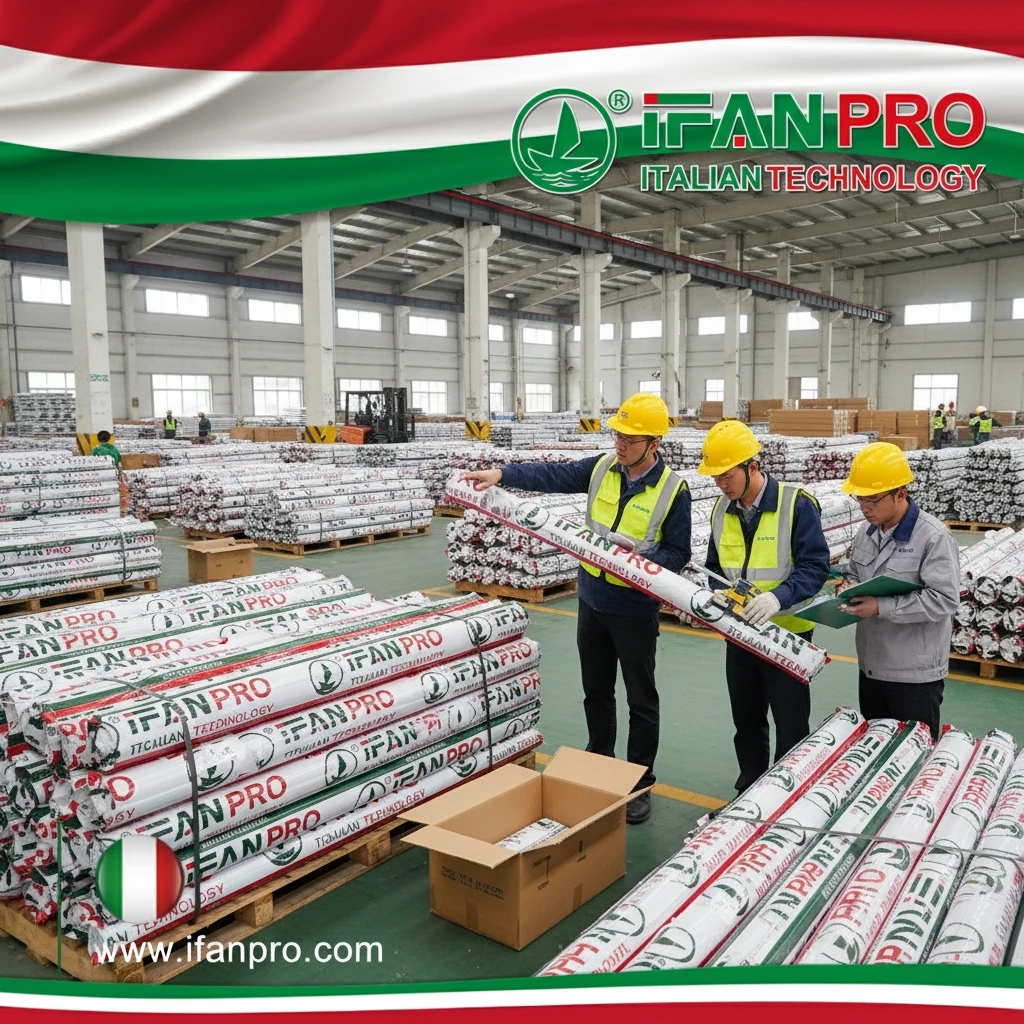During my first year as a project manager, I mistakenly specified PVC pipes for a hot water line, resulting in costly replacements and project delays. This hard lesson taught me that understanding PVC’s capabilities and limitations is crucial for proper material selection in construction projects.
PVC (Polyvinyl Chloride) pipes are rigid plastic piping systems made from synthetic plastic polymer, primarily used for drain-waste-vent (DWV) systems, water distribution, irrigation, and electrical conduit applications. Their lightweight nature, corrosion resistance, and cost-effectiveness make them suitable for various residential, commercial, and industrial applications where temperature and pressure conditions align with PVC’s material properties.
Understanding PVC’s characteristics helps professionals make informed decisions about when to use these pipes and when to consider alternatives. Furthermore, recognizing PVC’s safety certifications ensures appropriate use in potable water systems. Now, let’s explore PVC pipes’ specific applications and considerations.
What Are the Most Common Applications for PVC Pipes in Construction?
While working on a large residential development, we utilized PVC pipes in seven different systems throughout each building. This approach demonstrated how PVC’s versatility can streamline procurement and installation across multiple applications while maintaining performance standards.
PVC pipes most commonly serve in drain-waste-vent (DWV) systems, potable water distribution, irrigation systems, electrical conduits, and sewer/drainage applications. Their chemical resistance, smooth interior walls, and durability make them ideal for these functions, though specific PVC types and schedules are required for different applications.

Primary Construction Applications
PVC pipes serve several critical functions in construction projects. Firstly, in plumbing systems, PVC dominates DWV applications due to its excellent drainage characteristics and resistance to household chemicals. Schedule 40 PVC handles most residential DWV needs, while Schedule 80 provides extra strength for commercial applications. Their smooth interior walls prevent scale buildup and maintain flow efficiency over time.
Secondly, for water distribution, PVC pipes efficiently transport potable water in municipal and residential systems. Their corrosion resistance prevents rust contamination, and their non-reactive nature maintains water quality. However, it’s crucial to note that only specific NSF-certified PVC types are suitable for potable water applications.
Thirdly, electrical installations benefit from PVC conduit’s non-conductive properties and moisture resistance. Both rigid and flexible PVC conduits protect wiring from environmental damage while providing easy installation access. Their dielectric properties prevent electrical conduction, enhancing safety.
Specialized Construction Uses
Beyond these primary applications, PVC serves specialized construction purposes:
| Application | PVC Type | Ключевые преимущества | Considerations |
|---|---|---|---|
| Underground Sewer | SDR 35 | Crush resistance, root intrusion resistance | Proper bedding and backfill essential |
| Irrigation | Class 200 | UV resistance, cost-effectiveness | Protection from freezing required |
| Pool Plumbing | Schedule 40 | Chlorine resistance, smooth flow | Special cement for pressurized systems |
| Vent Pipes | DWV | Lightweight, easy installation | Support spacing critical in tall stacks |
How Does PVC Compare to Other Materials Like Copper or PEX Pipes?
When a client questioned our material recommendation for a commercial project, we conducted side-by-side comparisons of PVC, copper, and PEX in identical applications. The results clearly demonstrated each material’s strengths and limitations in specific scenarios.
PVC generally outperforms copper in cost-effectiveness and corrosion resistance while surpassing PEX in structural rigidity and UV resistance. However, PVC falls short compared to copper in temperature tolerance and to PEX in freeze resistance and installation flexibility, making each material better suited for specific applications.
Comprehensive Material Comparison
Understanding how PVC compares to alternative materials ensures proper selection:
Versus Copper Pipes
PVC holds significant advantages in cost, typically costing 50-70% less than copper for equivalent applications. Additionally, PVC’s corrosion resistance eliminates the pitting and scaling issues that plague copper in certain water conditions. However, copper maintains superiority in temperature tolerance, handling hot water applications that would damage PVC, and offers proven longevity with 50+ year service records in many installations.
From an installation perspective, PVC’s lightweight nature and solvent-welding joining method make installation faster and less labor-intensive than copper’s soldering requirements. Nevertheless, copper provides greater structural strength and resistance to physical damage, making it preferable in exposed applications where impact resistance matters.
Versus PEX Pipes
PVC offers superior rigidity, maintaining shape without extensive supports, unlike flexible PEX that requires regular anchoring. Furthermore, PVC’s UV resistance allows exterior use without degradation, while PEX requires protection from sunlight. However, PEX demonstrates remarkable freeze resistance, expanding and returning to shape without bursting, unlike rigid PVC that can crack in freezing conditions.
Regarding installation, PEX’s flexibility enables fewer fittings and easier retrofits in tight spaces, while PVC requires more fittings for directional changes. Additionally, PEX handles both hot and cold water, unlike temperature-limited PVC, providing whole-house piping capability from a single material.
Selection Guidelines
Choose piping materials based on specific project requirements:
- Choose PVC for: DWV systems, underground irrigation, electrical conduit, cold water supply, and drainage applications
- Choose Copper for: Hot water lines, exposed plumbing in high-value homes, retrofits where space is limited, and installations requiring maximum durability
- Choose PEX for: Whole-house repipes, freeze-prone areas, complex layouts with many bends, and installations requiring minimal joints
What Are the Limitations of Using PVC Pipes in Plumbing Systems?
After a failed PVC installation in an industrial facility, we documented thirteen specific limitations that professionals must consider when specifying PVC piping systems. This comprehensive approach now prevents inappropriate applications and ensures project success.
PVC’s primary limitations include temperature restrictions preventing use with water above 140°F, UV degradation requiring protection from sunlight, vulnerability to certain chemicals, brittleness at low temperatures, and potential environmental concerns regarding production and disposal. These limitations restrict PVC to specific applications where conditions remain within its operational parameters.
Critical Limitations and Constraints
Understanding PVC’s boundaries prevents application failures:
Temperature Limitations
PVC’s most significant restriction is its limited temperature tolerance. The maximum service temperature for most PVC pipes is 140°F (60°C), with prolonged exposure to temperatures above this causing softening and deformation. This restriction eliminates PVC from hot water supply lines, heating systems, and industrial processes involving heated fluids. Furthermore, PVC becomes brittle below 32°F (0°C), making it susceptible to impact damage during cold weather installation or service.
Chemical and Environmental Vulnerabilities
While PVC resists many chemicals, it’s vulnerable to certain solvents, hydrocarbons, and chlorinated compounds that can cause cracking or dissolution. Additionally, UV exposure causes embrittlement and degradation in exterior applications unless UV-stabilized formulations are used. PVC also has higher thermal expansion than metal pipes, requiring careful attention to expansion loops and supports in long runs.
Physical Performance Constraints
PVC’s pressure ratings decrease significantly with temperature increases, a factor often overlooked in system design. A pipe rated for 150 PSI at 73°F may only handle 75 PSI at 100°F. Additionally, PVC has lower impact resistance than metal pipes, making it vulnerable to damage during construction or from physical abuse in service. Its rigidity also makes it less forgiving of soil settlement or building movement compared to more flexible alternatives.
Application-Specific Restrictions
Certain applications require careful consideration of PVC’s limitations:
| Application | Primary Limitation | Alternative Solutions |
|---|---|---|
| Hot Water Supply | Temperature degradation | CPVC, copper, or PEX |
| Exterior Above-Ground | UV degradation | UV-stabilized PVC or metal |
| Chemical Drainage | Solvent vulnerability | PP, PVDF, or metal |
| High-Traffic Areas | Impact vulnerability | Metal pipes or protective covering |
Are PVC Pipes Safe for Drinking Water Supply Applications?
When community concerns emerged about PVC safety in a municipal water project, we coordinated with independent testing laboratories to analyze water quality before and after PVC installation. The results provided scientific validation of PVC’s safety when properly manufactured and installed.
Properly manufactured PVC pipes carrying NSF/ANSI 61 certification are safe for drinking water applications, as they meet strict standards for material composition and leaching potential. These pipes don’t corrode or introduce metals into water, and their smooth interiors resist biofilm growth, potentially providing cleaner water than some alternative materials.
Safety Certifications and Standards
Several verification systems ensure PVC’s safety for potable water:
NSF/ANSI Standard 61
This comprehensive standard evaluates products that contact drinking water, establishing stringent requirements for material safety. PVC pipes bearing NSF/ANSI 61 certification have undergone extensive testing to verify they don’t introduce contaminants at levels that pose health risks. Manufacturers must regularly test certified products to maintain this designation.
Other Verification Systems
In addition to NSF certification, many regions have specific approval requirements. The UPC (Uniform Plumbing Code) listing in the United States, WRAS (Water Regulations Advisory Scheme) approval in the United Kingdom, and various European CE markings all provide additional assurance of PVC’s safety for potable water applications.
Health and Safety Considerations
Understanding the science behind PVC safety helps make informed decisions:
Состав материала
Modern PVC pipes for potable water use non-toxic stabilizers rather than the lead-based compounds once used historically. Calcium-zinc and tin-based stabilizers have replaced heavy metal additives, eliminating concerns about metals leaching into drinking water. Additionally, food-grade virgin materials ensure no contamination from recycled content.
Leaching Characteristics
Studies of PVC pipes in water systems show negligible leaching of vinyl chloride monomer (VCM) when pipes are properly manufactured. The extrusion process effectively removes residual VCM, resulting in finished pipes with virtually non-detectable monomer levels. Furthermore, PVC’s non-porous surface prevents bacterial colonization that can occur in some alternative materials.
Installation Best Practices for Safety
Proper installation maintains PVC’s safety advantages:
Joining Method Considerations
Solvent cement joints require proper ventilation during installation and adequate cure time before system pressurization. Using primers and cements certified for potable water systems ensures no harmful substances migrate into the water supply. Following manufacturer instructions for application and cure times is essential for maintaining water quality.
System Flushing and Commissioning
New PVC systems require thorough flushing before initial use to remove any installation debris or residues. Following recommended flushing procedures and water testing verifies system cleanliness before placing into service. Additionally, periodic maintenance should include inspection for potential contamination points.
Заключение
PVC pipes offer a cost-effective, corrosion-resistant solution for many construction applications, particularly DWV systems, cold water distribution, and electrical conduits, though their temperature limitations and environmental considerations require careful application assessment. When properly selected, installed, and maintained according to manufacturer specifications and certified for intended uses, PVC pipes provide safe, reliable performance across numerous construction applications while delivering significant cost advantages over alternative materials.













Последние комментарии